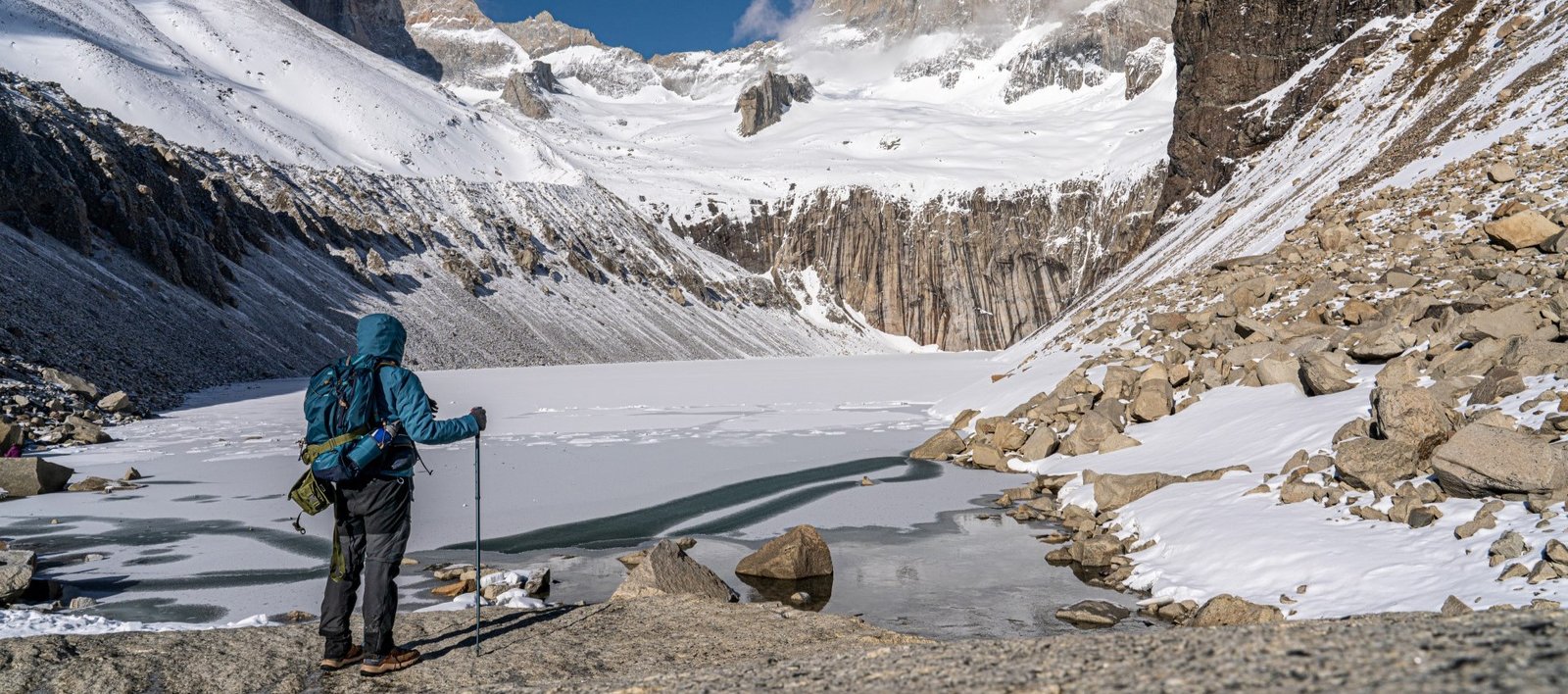
A walk in Patagonia
The experience of hiking the high mountains with the experts of the Fjällräven Classic offers the opportunity to see impossible places, learn how to use a map, backpack properly and enjoy what it means to face nature carrying all the essentials on your back. My first experience was in Chile, behind the idyllic Torres del Paine.
By Javier A Pinzón
Photos: Javier A. Pinzón
Last year I had the privilege of participating in the pilot of the Fjällräven Classic Chile. But what is this event all about? In essence, the idea is to immerse yourself in nature carrying all the essentials on your back. Meanwhile, Fjällräven takes care of logistics, ranging from freeze-dried food and transportation to route planning and additional details. So, after receiving the invitation, I organized my luggage and boarded a flight to the majestic Chilean Patagonia to embark on a 95-kilometer hike in five days through the imposing mountains.
My first stop was in Puerto Natales, almost three thousand kilometers south of Santiago, at the cozy Remota Patagonia Lodge. There, Fjällräven representatives greeted us warmly and took us to the Volkanica Store, where we received a detailed talk on how to pack efficiently and what items to include in our backpacks, as well as providing us with essential food for the first two days of hiking. In the afternoon, I contemplated from the window of my room the mountains that awaited me. My excitement was uncontainable, as my journey to the mythical Torres del Paine was about to begin.
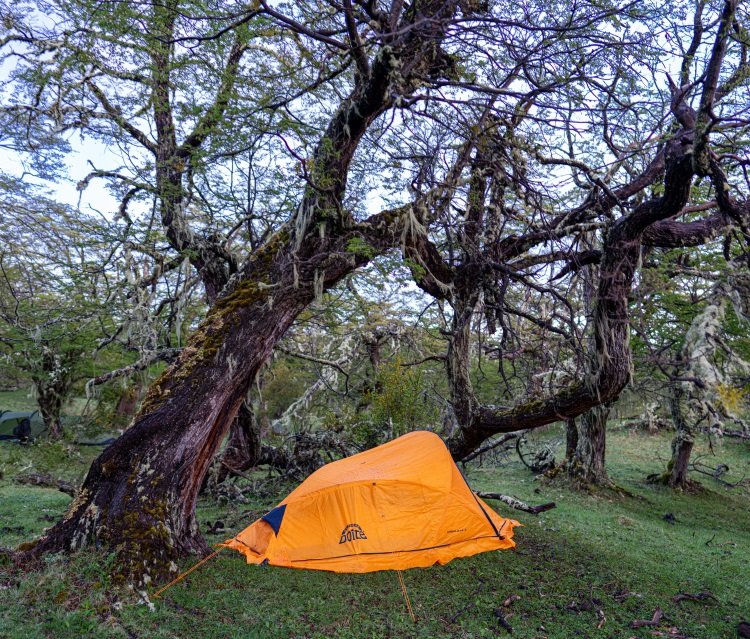
Wet welcome
Dawn of the first day found us at Grey Viewpoint, on the banks of the Serrano River. We had a spectacular view of the lake amid a howling wind. The Fjällräven team was waiting at the starting line. It was time to register, confirm that we had downloaded the route map, and weigh our backpacks. Mine tipped the scales at about 31 pounds, within the expected range. The journey begins on a trail that winds through modest mountains. The first 13 miles were relatively low-key, with each hiker setting their own pace. However, the unpredictable Patagonian nature decided to work its magic: at the top of the mountain, the wind came up strong and it started to rain. Despite our waterproof gear, the rain breached our defenses and we got soaked. It was a Patagonian baptism by fire and a reminder of nature’s ruthless power. In the Serrano forest, we were greeted with a comforting hot beverage and laughter at the first campsite, but there was a touch of frustration over the icy weather.
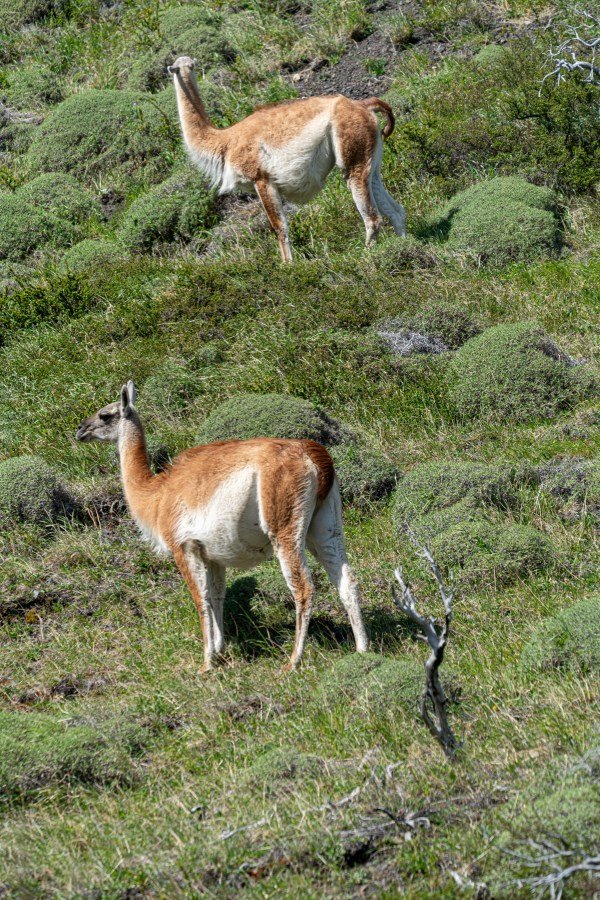
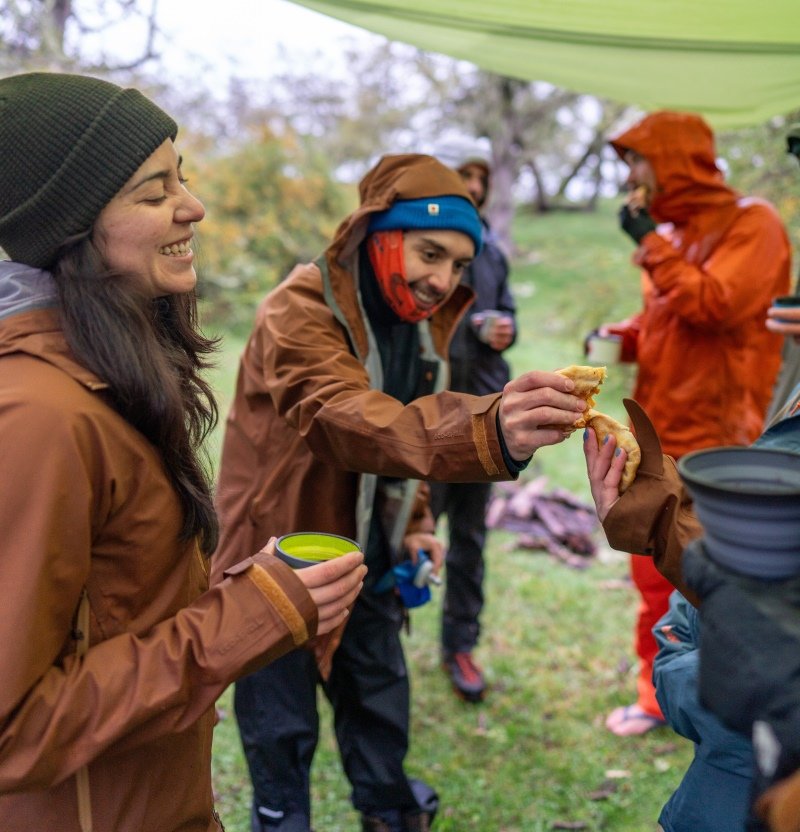
First View of the Cuernos Peaks
The second day presented a dilemma, since our clothing was still soaked. We opted for a short break in a shelter. A while later, we drove to where the catamaran ferry would depart for the second campsite in Paine Grande inside the National Park. A pair of guanacos saw us off.
The catamaran ferry offers unspoiled views of majestic mountains in a park that spreads over more than half a million acres. The scenic Cuernos rose before us. After being assigned tents at the campsite, we hurried to set up camp, prepare our cameras, and adjust our walking sticks for the hike to Grey Viewpoint, which is part of the W circuit we would explore over the following days. The trail led us through forests of lenga beech trees, following the course of the Grey River and skirting the lake of the same name.
This behemoth of ice, the most extensive glacier in the park (approximately 4 miles wide by 12 miles long), emerged in the distance. We knew that the glacier recedes a bit more every year in a drawn-out goodbye. We arrived at the campsite with enough time to sip some beer with our traveling companions and make a toast to newly forged friendships.
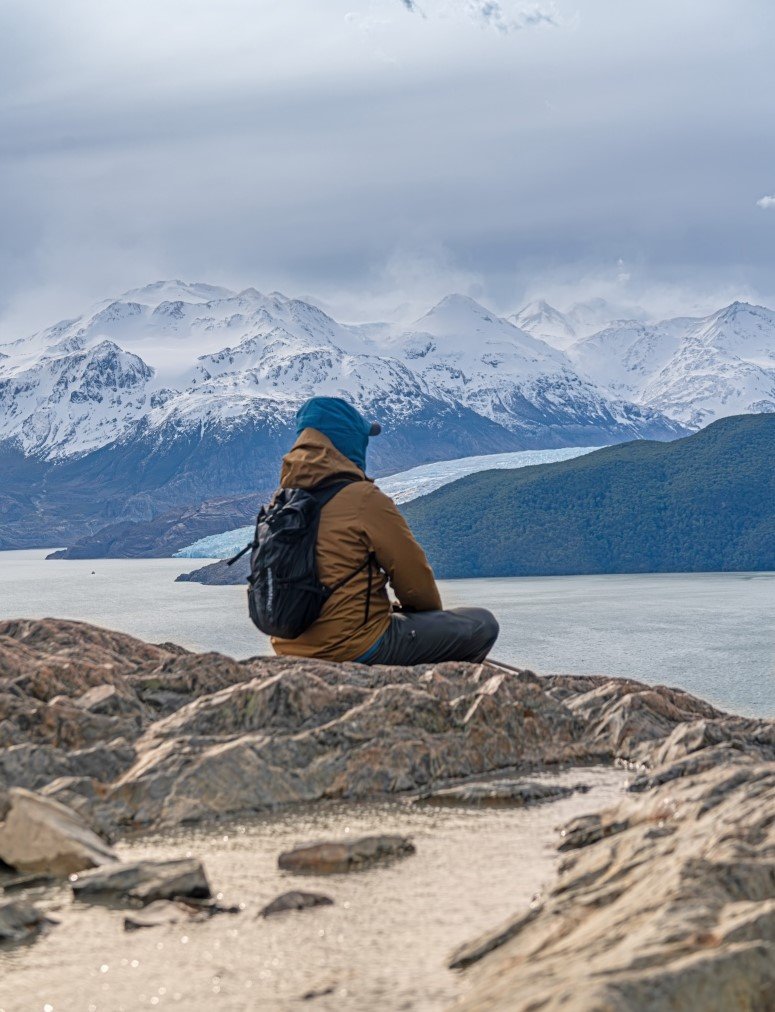
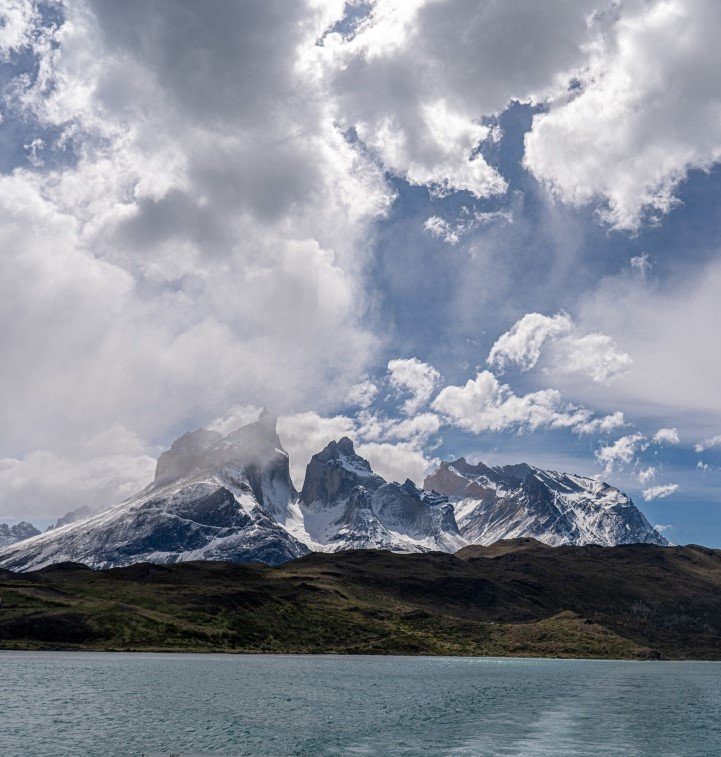
Onward to French Viewpoint
The third day we awoke to a cloudy sky that didn’t augur well. Nevertheless, we had to get ready, pack, and start walking. Along with two companions, we headed for the French Campsite, some 13 miles further along.
The blue-green tones of Lake Pehoé, at the first reference point, were enchanting. The route wound through modest mountains that permitted us a continuous view of the grand snowy peaks at the expedition’s final destination. Halfway through the walk, we came to a crossroads, where we could either continue to the French Campsite or ascend to the French Viewpoint (some 3 miles) or the British Viewpoint (nearly 7 miles). The rain persuaded us to try to reach the French Viewpoint. Running between forests and streams, the trail sloped steeply upward. Everything went well at first, but a slip resulted in mild knee pain that would last the rest of the trip. I determinedly climbed to the viewpoint in spite of the discomfort.
At that point, rain morphed into snow. Tiny flakes fell among the fog, creating a melancholy atmosphere. The descent was challenging, but at the end of the day, we shared well-deserved glasses of wine as we admired a lovely sunset.
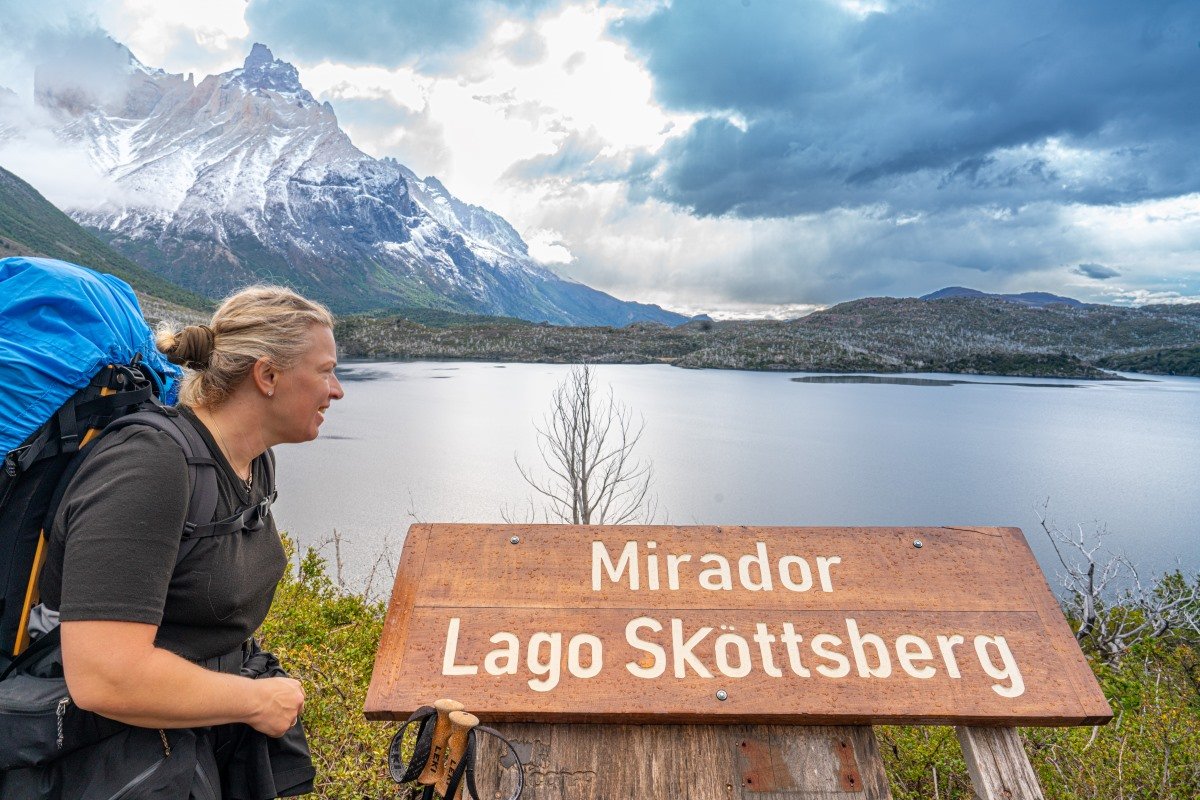
Day Four: Season to Season
The day dawned autumnal. We refueled with a substantial breakfast, prepared our packs, and headed for the next stop: Las Torres Central Campsite. Small flakes of snow began to drift down as we took care of last-minute details. It looked like winter had arrived even before we set out on our hike. The landscape changed completely: the white cover mantling the trees contrasted with the blue of the lakes.
After walking several miles, the snow gave way to anemic sunshine that prompted us to take off our jackets. Nordenskjöld Lake was always in sight during our walk and we even reached the shore at one point. We paused briefly there to rest, play with stones, and marvel at the immensity of the lake. We reluctantly pressed on.
The sun warmed, producing a feeling of summer, and we began to shed layers of clothes to cool off. A regal bird soared near the summits of this idyllic panorama: an Andean condor. A few miles from our destination my knee became intensely painful, but the landscape nourished my spirit and encouraged me to give it my all. I finally reached our campsite, where our companions immediately doled out hugs. We had reached our last stop in Torres del Paine Park. Early evening at the Central campsite was spent exploring a bit of the fascinating gaucho culture.
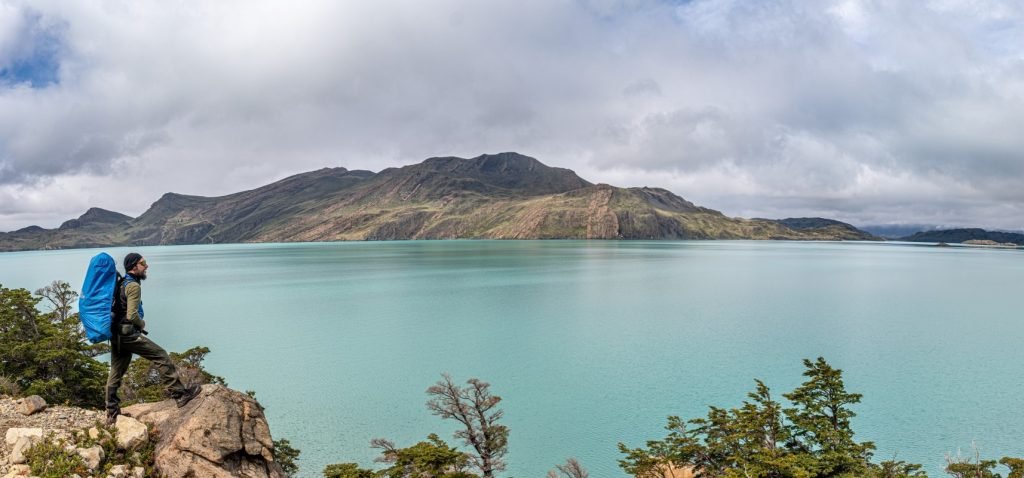
Day Five: Solitude
In the quiet of the morning, I rose before the sun. Fearing that my knee would fail me, I decided to start walking toward the Torres del Paine Base alone. The moon and stars lit my way during the first hours of this introspective walk of some 11 miles (there and back).
At the first summit, I turned an undaunted gaze on dawn in the vastness of Chilean Patagonia. I was beset by a swirl of sensations from hot to cold, and I felt my insignificance in such an immense landscape. On the other side of the mountain, the landscape was transformed under still fresh snow. The distant mountains gleamed under the first rays of the sun, creating a contrast with the shadows on this side of the mountain.
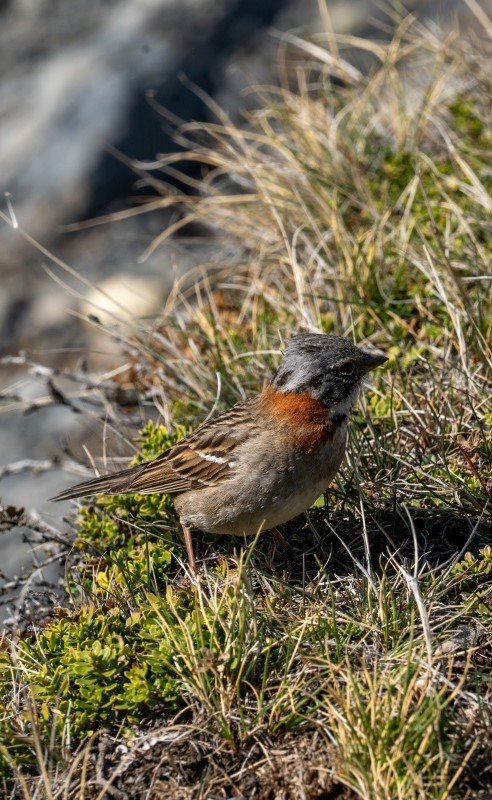
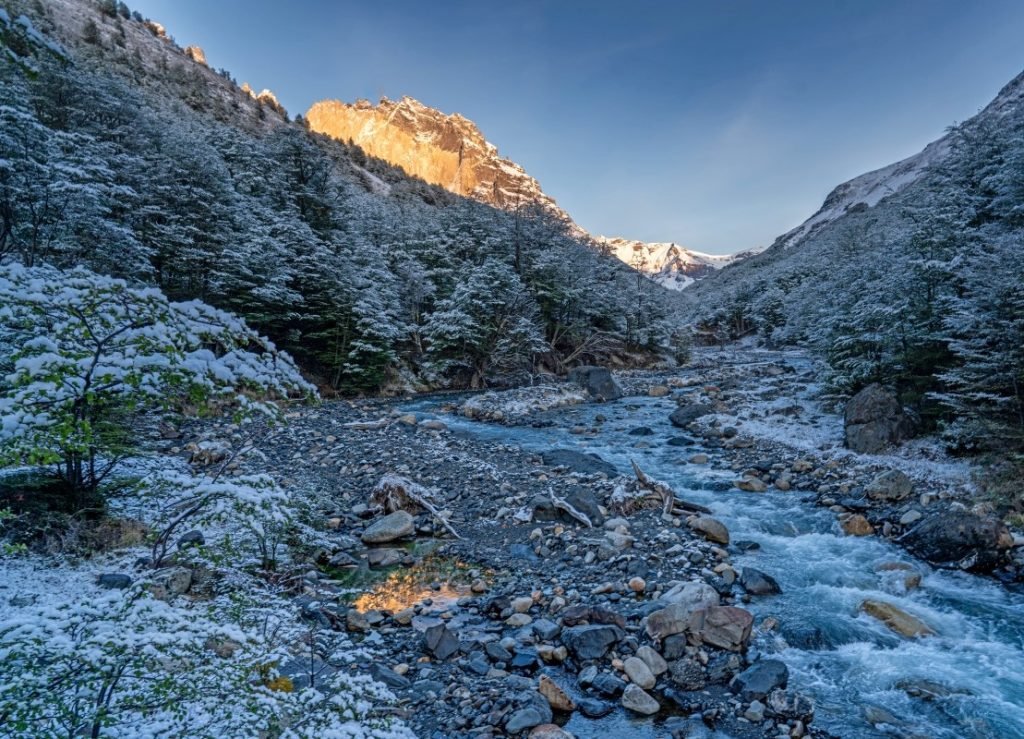
The miles passed slowly as I walked toward the last ascent and the Paine Towers appeared on the horizon. Everything looked close at hand, but the road continued to unfurl against the snow. Finally, after one last push, I stood before imposing towers rising out of a frozen lake. II sat on a rock and just stared. We returned under beaming sunlight; only the shadows of the forest offered respite. The landscape transformed yet again into something very different from the morning mood.
Joy erupted when we reached the campsite. We had achieved our goal. There was nothing more we had to do; we could simply sit and savor a mate tea alongside our traveling companions. A farewell party was planned for the evening. Our emotional odyssey through Chile ended with glasses of wine and roast lamb worthy of these lands.
In a nutshell, I experienced many miles of walking while carrying my equipment, setting up my tent, preparing my meals, and forging ahead at my own pace in the company of people from around the world that I had the pleasure of meeting.
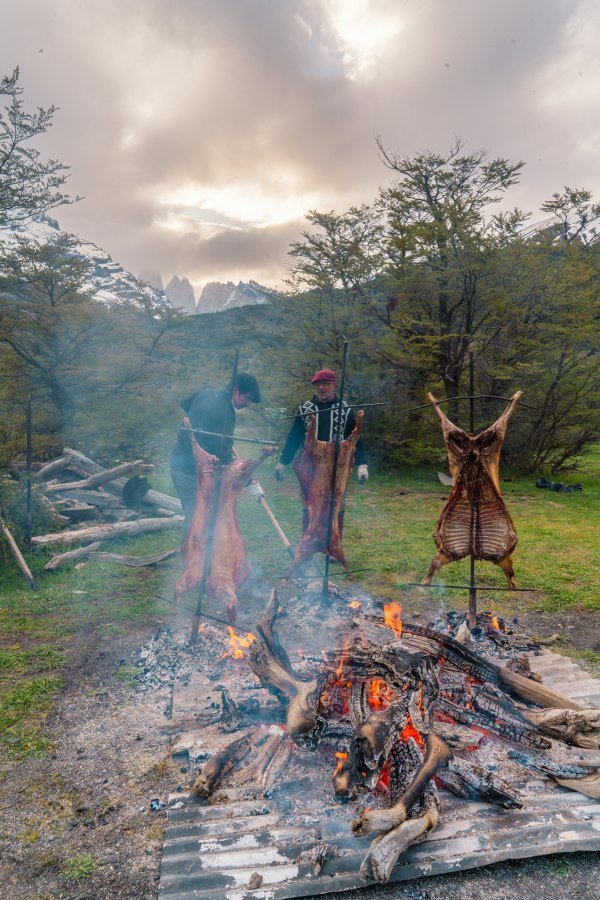
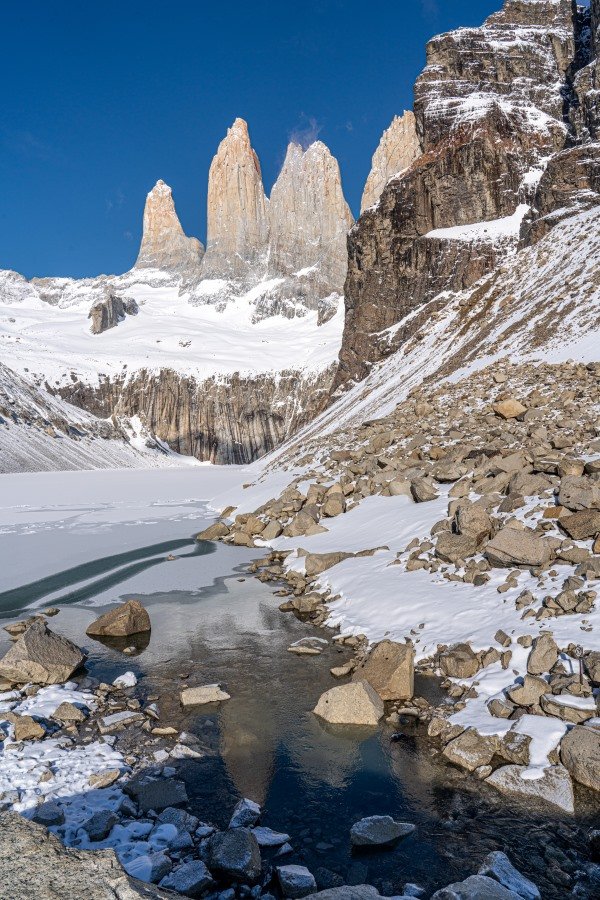
Fjällräven Classic Chile
Inspired by the magnificent landscapes of the Swedish mountains, Åke Nordin created the Fjällräven Classic some twenty years ago. The idea was to encourage people to explore those areas via the iconic Kungsleden trail. The first event in 2005 attracted 152 participants; by 2015 there were already 2,136. In 2024, hikers organized similar trips in Sweden (August 9-16), Denmark (July 3-6), Germany (September 25-27), the United States (July 24-26), Korea (October 16-19), the United Kingdom (September 12-14), and for the first time, Chile, where the nature reserves would be open from March 4 to 11. While the event has evolved, the basic concept remains the same: it is not a competition, but rather an opportunity to socialize and enjoy the experience of walking in nature. The weather, the considerable distances, and the vertical ascents are challenging, but feasible with suitable preparation and a positive mindset.
For further information, visit classic.fjallraven.com.
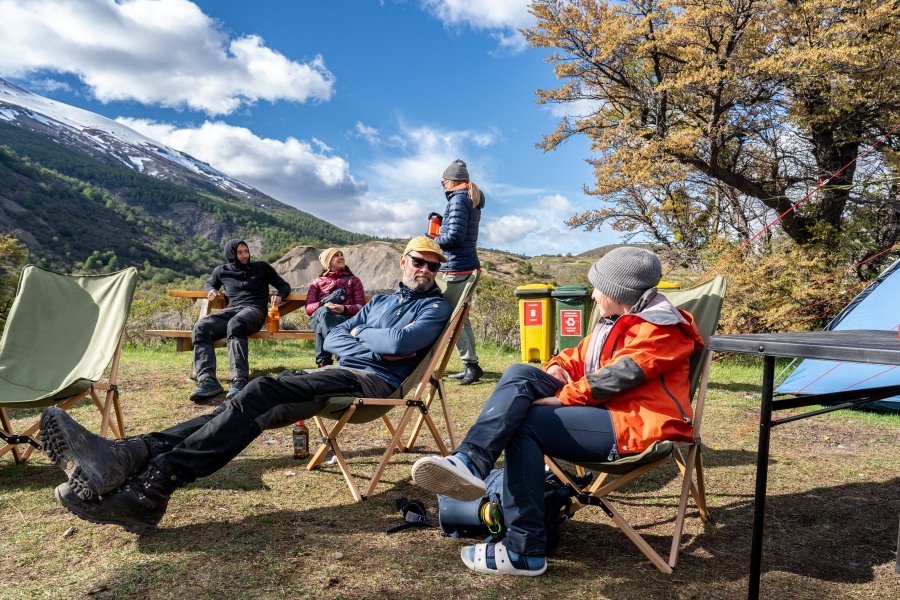

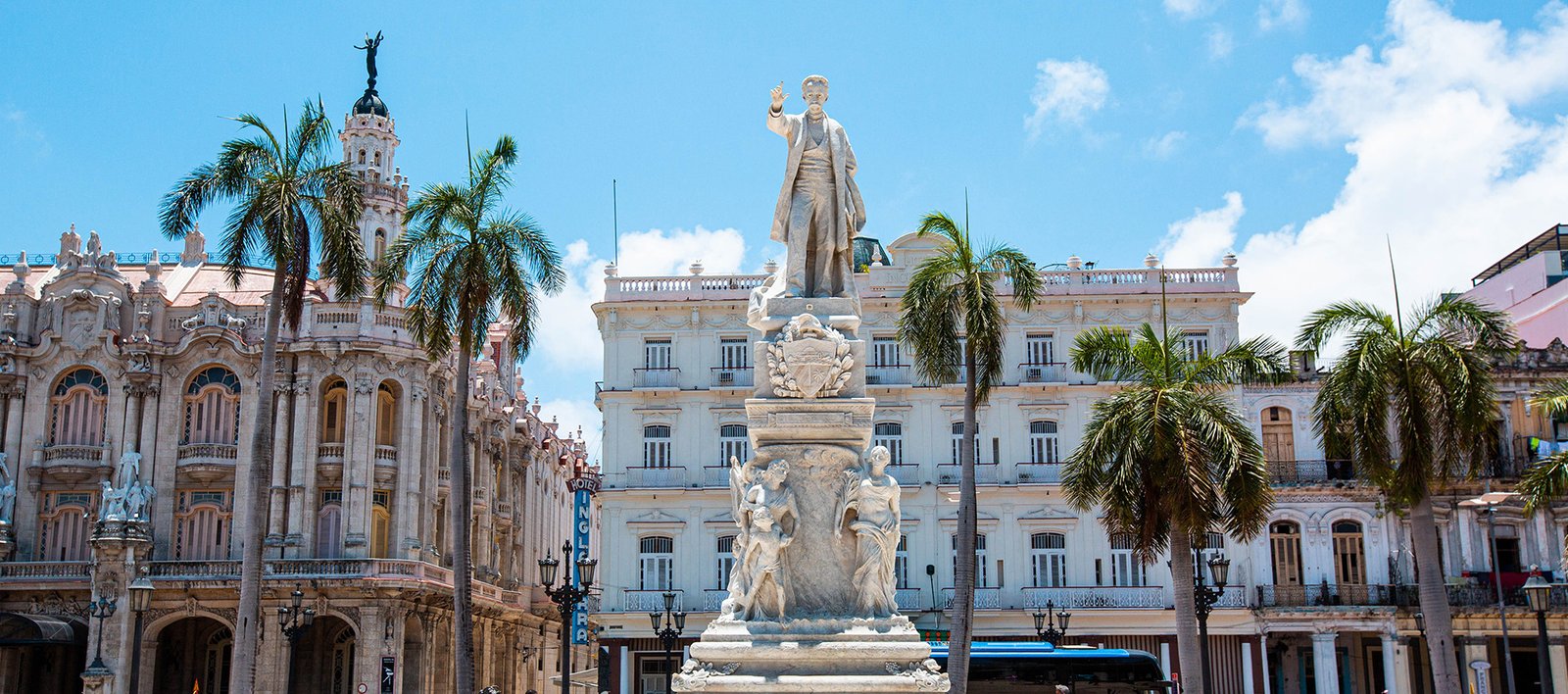
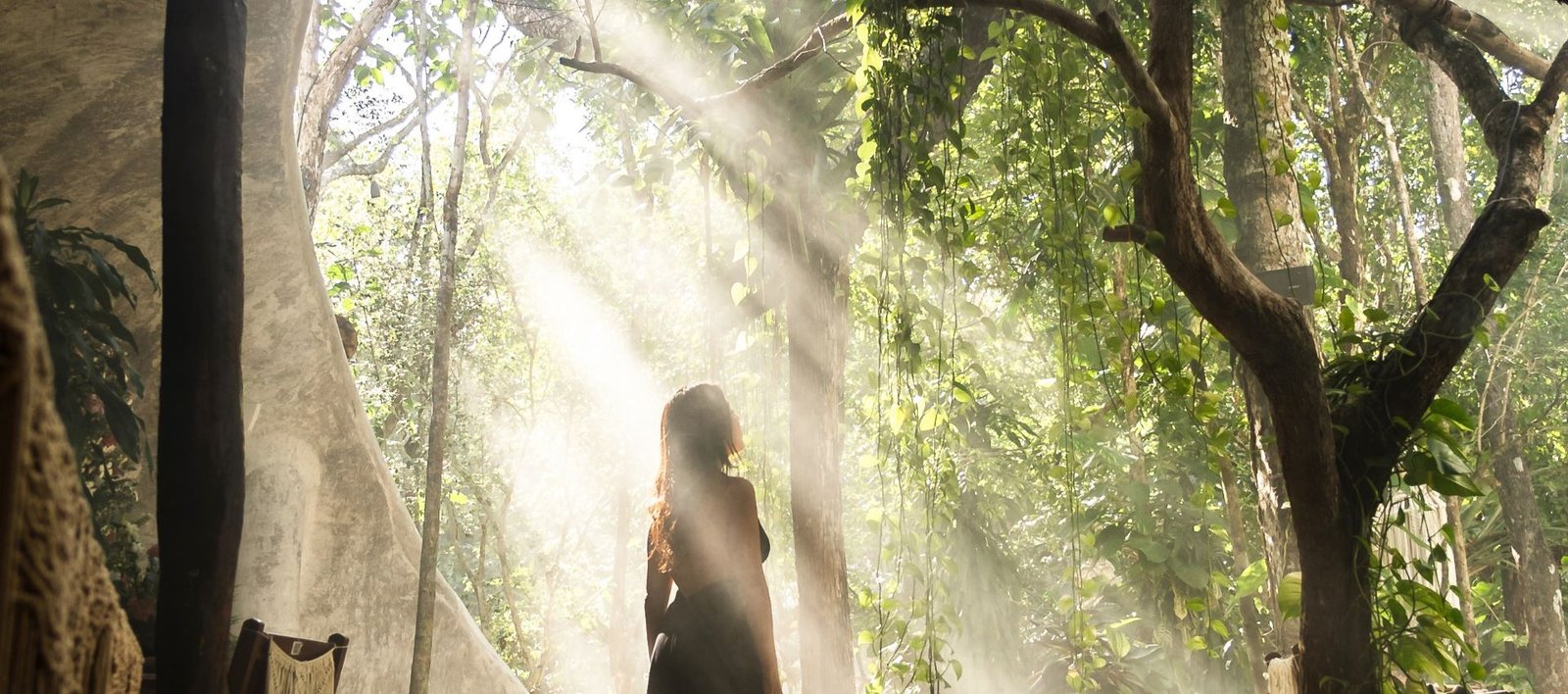

Leave a Reply